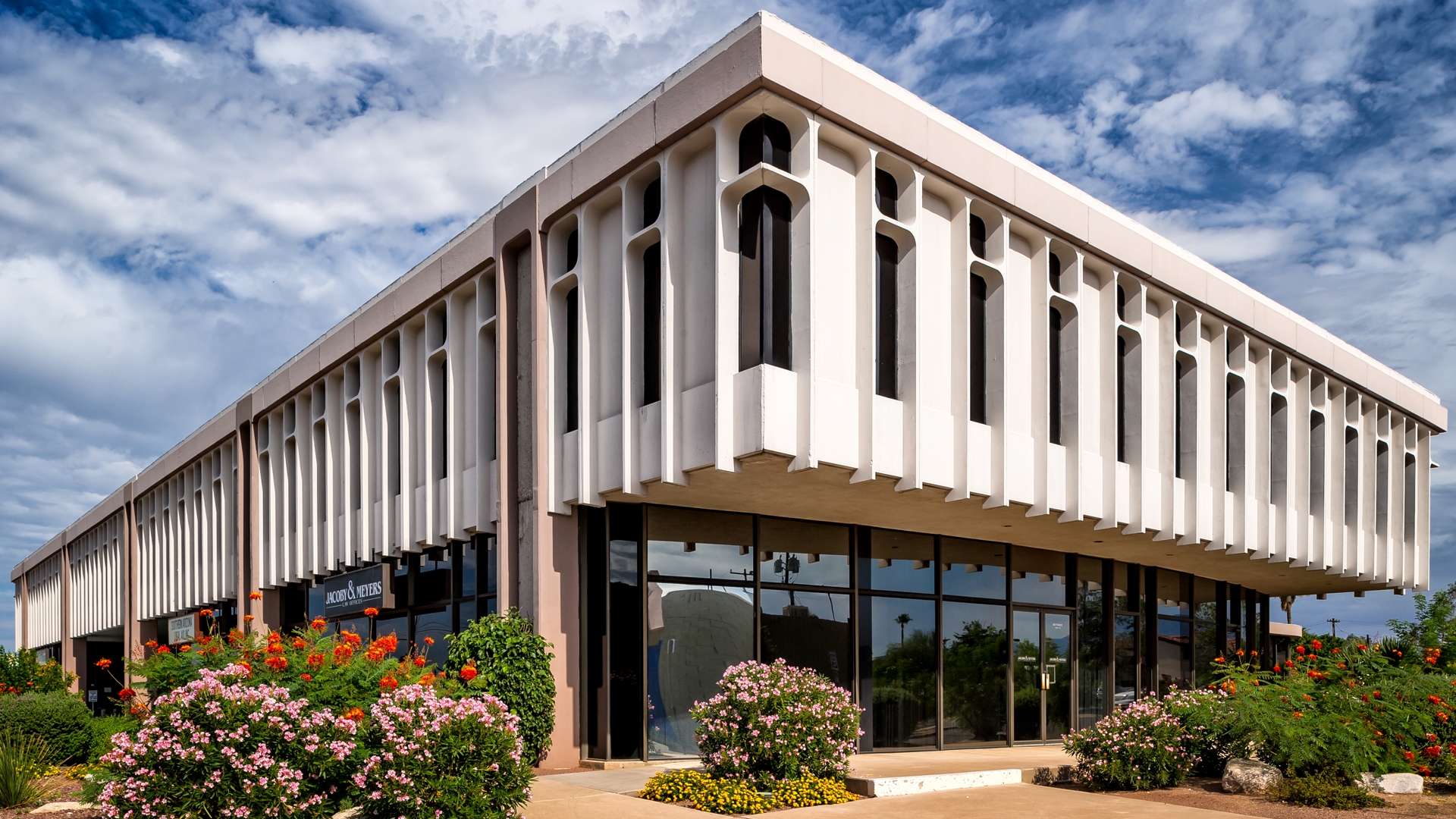Glass storefronts, geometric designs, new materials and evocative signage combined to create a vision of Tucson as a modern metropolis. In 1953, a contest was sponsored by the East Broadway Merchants to name the strip between Campbell and Country Club. Over 5000 ideas were submitted and the winning entry was The Sunshine Mile.
An extraordinary collection of Mid-Century Modern buildings designed by Tucson’s most influential architects of the era shaped this modernist boulevard. Bernard Friedman, Fred Jobusch, Sylvia and William Wilde, Anne Rysdale, Nicholas Sakellar, Charles Cox, Cain, Nelson and Ware, Howard Peck as well as others, including phoenixes Ralph Haver and California’s Ronald Bergquist all contributed to the unique character of this commercial shopping district.
In the 1980s a transportation improvement plan was concocted that would raze the north side of the street making way for eight lanes of traffic. The plan ignored the architectural and historic context of the street and created uncertainty. For over twenty years the street widening plan has resulted in disinvestment and the slow deterioration of this elegant mid‑century corridor. Yet the uncertainty of demolition has ironically resulted in the preservation of the historic buildings that line the blacktop.
In November of 2012 the Arizona Preservation Foundation added this segment of Broadway from Euclid to Country Club to its list of most endangered historic places.
The modernist architectural heritage of this street is an irreplaceable regional asset that must be celebrated, honored and cultivated. Broadway Boulevard is a significant part of Tucson’s story and the American Experience.
As part of an ongoing effort to educate the community and spur economic investment into Broadway the Tucson Historic Preservation Foundation completed a National Register of Historic Places Nomination and submitted it to the Arizona State Historic Preservation Office in 2018. The Sunshine Mile was listed on the National Register of Historic Places on May 26, 2020.







